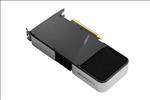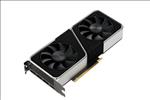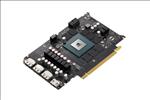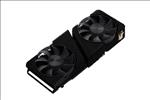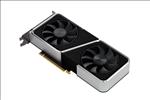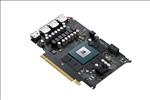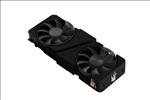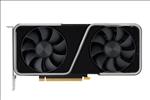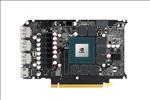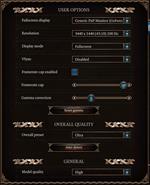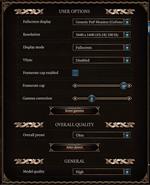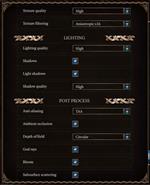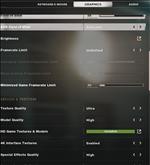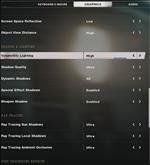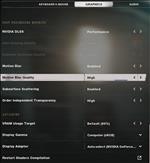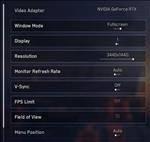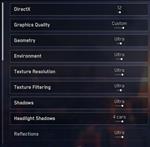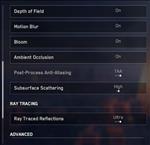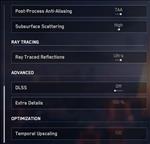
NVIDIA GeForce RTX 3060 Ti
NVIDIA has the high end covered in terms of video cards so they’re starting to hit the mid-range area. December 2, we’ll see the release of the GeForce RTX 3060 Ti, a card that’s priced at $399 yet has the speed of a much more expensive GeForce RTX 2080 Super, which sells for $699. We’re looking at a $300 savings with the RTX 3060 Ti.

So how well does it stack up? Let’s go over the card first.
Here’s how the GeForce RTX 3060 Ti is configured:
|
GeForce RTX 3060 Ti |
GeForce RTX 2080 Super |
GeForce RTX 3080 |
GeForce RTX 3070 |
|
|
SM |
38 |
34 |
68 |
46 |
|
CUDA Cores |
4864 |
2176 |
8074 |
5888 |
|
Tensor Cores |
152 (3rd gen) |
272 (2nd gen) |
272 (3rd gen) |
184 (3rd gen) |
|
RT Cores |
38 (2nd gen) |
34 (1st gen) |
68 (2nd gen) |
46 (2nd gen) |
|
Texture Units |
152 |
136 |
272 |
184 |
|
ROPs |
80 |
64 |
96 |
96 |
|
GPU Boost |
1665 MHz |
1650 MHz |
1710 MHz |
1725 MHz |
|
Memory Clock |
7000 MHz |
7000 MHz |
9500 MHz |
7000 MHz |
TGP is 200W so slightly higher than the RTX 2080 Super’s 175W TGP. The RTX 3060 Ti features 8GB of GDDR6 memory, just like the RTX 3070. There’s been some talks around that 8GB isn’t future proof enough, but so far I haven’t run into any issues. Although, we might see some AIB partners later on down the road release cards with increased memory, I haven't run into any problems with the current memory configuration.
Lengthwise, it’s the same as the GeForce RTX 3070, which is already a compact card. It features the same rear ports as its older brothers, consisting of three DisplayPorts and one HDMI 2.1 port. Without the color difference and the small RTX 3060 Ti designation on the back, you’d be hard pressed to know it wasn’t the RTX 3070.

The fan and heatsink shroud is the same as the GeForce RTX 3070, but with a more silver coloring versus the darker metallic shade of the RTX 3070. The opening on the bottom of the card where the air pulls through is a smaller window with the rest of the back being solid. There’s a small notation marking that it’s an RTX 3060 Ti, but otherwise, the back of the card is pretty simplistic in design. If the RTX 3070 is any indication, the cooling and acoustics will be great.
This is also the fourth Ampere card to use the 12-volt power connector and it’s again situated in the middle of the top parallel to the back of the card. NVIDIA has included a single 8-pin to 12-pin connector in case you don’t have one of these new cables, although I’m seeing more and more power supply manufacturers selling them for their modular PSUs. Since it’s a single cable, I wouldn’t mind if they'd kept the connector as an 8-pin variant, but I can also understand NVIDIA trying to push the 12-pin standard for current and future cards. Still, NVIDIA is the only company right now using the 12-pin connector and I think it made more sense on the RTX 3080 and RTX 3090 card versus the RTX 3070 and RTX 3060 Ti.

And by now, you should pretty much know all there is about Ampere cards as we’ve covered them a lot here. Features such as NVIDIA Reflex to improve first-person shooter response times and various AI enhancements used in NVIDIA Broadcasting help make this line of cards more than just good at displaying fast graphics. DLSS is another feature that I wasn’t that impressed with its initial launch, but 2.0 has really hit its stride at being a viable option to turn on to get increased performance when turning on RTX features and not suffering from image degradation. There’s a lot of extra things NVIDIA offers that makes their lineup of cards worth buying.
Here’s my test system:
Intel i7-9700K
32GB DDR-3200 G-Skill Ripjaw RAM
MSI MPG Z390 Gaming Pro Carbon
1TB Western Digital NVMe
Ultrawide 3440x1440 100Hz monitor
457.40 NVIDIA drivers
Two new games have been added since my review of the RTX 3070 and one has been removed. Battlefield V has been retired with Watch Dogs: Legion and Call of Duty: Black Ops Cold War being two new titles in this review. The rest remain the same as before.
With Minecraft, I decided to run the Portal Pioneers map, which has a minecart ride through a large part of the level that allows me to do consistent, repeatable tests instead of manually running through a level like in my previous review. The rest used the same process as before.
As always, tests were done with three runs and the scores were averaged. For games without a built in benchmark, I tried to find a good repeatable area to do my runs with minimal deviation. Watch Dogs: Legion has a built-in benchmark so I used that and with Call of Duty Black Ops Cold War, I ran the beginning of the mission where you infiltrate a satellite station in a snow setting.
Both Watch Dogs: Legion and Black Ops Cold War feature various RTX features and, in this review, I’ve included results from testing various settings with both games.















So, at $399, this card is only around 10-20% slower than the RTX 3070. For a $100 difference, you’re still getting a good amount of speed and all the fancy RTX features Ampere offers. That’s a good value proposition for those not looking to break the bank on a video card.
The big thing right now is if you can even get the card. That’s just a problem that’s probably going to keep being there until sometime next year. Demand for everything, not just video cards, is super high and manufacturers are having a tough time keeping up. And then you have the scalpers, which exacerbates the problem.

This card should be a great buy for mid-range gamers and for those who want to build some good small-form-factor computers. I didn’t have an RTX 2080 Super to compare it to, but with what I did have on hand, the RTX 3060 Ti really showed how well it can perform at its price point.
So, should you get one? If you are budgeting around $400 for a video card, then yes. RTX performance is good. More and more games are coming out utilizing ray tracing. It’s a fast, feature-rich card that doesn’t break the bank. Hopefully, there'll be some supply this year to satisfy the demand out there so consumers will be able to pick up this solid card. The release is December 2, so if you're looking to pick one up, I hope luck is on your side.
Rating: 8.8 Class Leading
* The product in this article was sent to us by the developer/company.

About Author
I've been reviewing products since 1997 and started out at Gaming Nexus. As one of the original writers, I was tapped to do action games and hardware. Nowadays, I work with a great group of folks on here to bring to you news and reviews on all things PC and consoles.
As for what I enjoy, I love action and survival games. I'm more of a PC gamer now than I used to be, but still enjoy the occasional console fair. Lately, I've been really playing a ton of retro games after building an arcade cabinet for myself and the kids. There's some old games I love to revisit and the cabinet really does a great job at bringing back that nostalgic feeling of going to the arcade.
View Profile






















